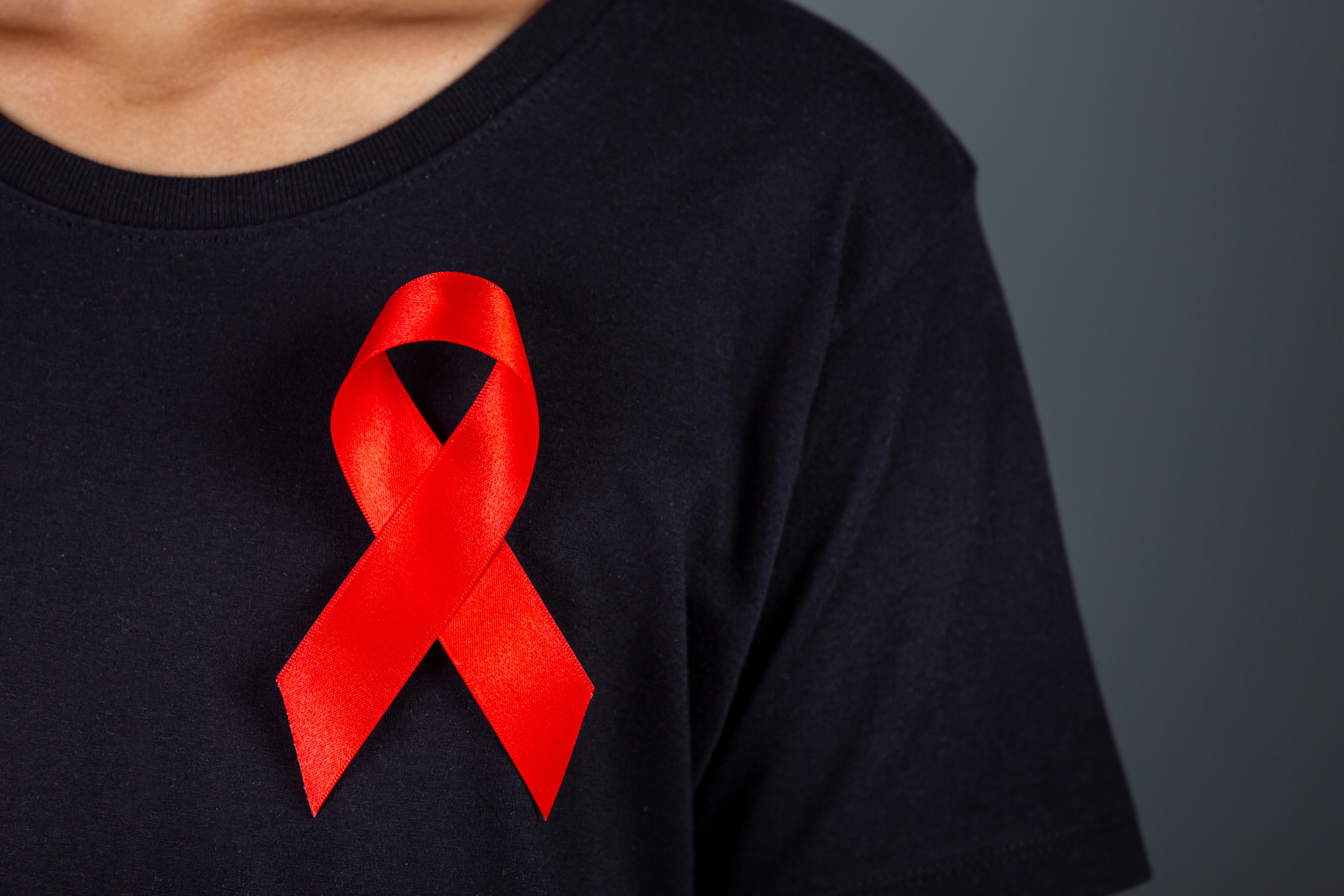General Physician | 13 min read
HIV and AIDS: Causes, Symptoms, Complications, Treatment
Medically reviewed by
Table of Content
Key Takeaways
- Human immune deficiency, also known as HIV, weakens and destroys the immune system's ability
- A lot of HIV symptoms are characterized by the flu or common cold, which is why it can be quite difficult to identify
- Although no cure has been founded, there are several treatments to halt its progression
Human immunodeficiency virus, which is the HIV full form, is a viral infection that affects humans and causes the deterioration of the immune system. As a result, the immune system is suppressed, and this leads to other health problems known as opportunistic infections. Acquired Immunodeficiency Syndrome, which is the AIDS full form, is a condition that develops as a result of late-stage HIV infection. A common misconception is that HIV AIDS is a disease by itself when in fact, HIV is the virus that when left untreated, can result in AIDS.
As HIV is an extremely dangerous and potentially life-threatening infection to have, it is important to stay well informed about it. Moreover, with no HIV cure available, your best bet is prevention and to do that effectively, you need accurate information to work with. To help with that, here’s all you need to know about the HIV infection and the AIDS condition.
What is HIV?
Human immunodeficiency virus is referred to as HIV. Your immune system's ability to fight off other illnesses is weakened by HIV infection and the destruction of immune system cells. HIV can cause acquired immunodeficiency syndrome if it has severely weakened your immune system (AIDS). HIV is classified as a retrovirus because it inserts its genetic code backwards into your DNA.
What is AIDS?
The most advanced and dangerous stage of an HIV infection is AIDS. Certain white blood cell levels are extremely low in AIDS patients, and their immune systems are severely degraded. They might also be suffering from conditions that point to the development of AIDS. AIDS develops in around ten years if HIV infections are not treated.
Difference Between HIV and AIDS
HIV is a virus that impairs your immune system, which makes it different from AIDS. When your immune system is significantly damaged as a result of an HIV infection, AIDS can develop. If you are not HIV-positive, you cannot acquire AIDS. Not every person with HIV develops AIDS because of medication that lessens the impact of the virus. But practically all HIV-positive individuals will eventually develop AIDS in the absence of treatment.
Causes of HIV
HIV is caused by a virus and can be transmitted from person to person in various ways like any other virus. Typically, HIV is transmitted via bodily fluids and there must be enough of the virus in the fluid to infect the other person. Some of the ways to get infected with HIV is by coming in contact with infected:
- Blood
- Vaginal secretions
- Semen
- Breast milk
- Anal fluids
- Medical equipment
- Drug equipment
Blood transfusions do not pose an extremely high risk as modern facilities effectively screen all parts of the process to avoid any such infection. However, this may not always be the case, especially in underdeveloped countries.
Causes of AIDS
African chimpanzees are susceptible to contracting HIV, a variant of the virus. According to scientists, the simian immunodeficiency virus (SIV) is thought to have spread from chimpanzees to humans through the consumption of chimpanzee meat contaminated with the infection.
Once in contact with humans, the virus changed into what is today known as HIV. This probably happened back in the 1920s. Over several decades, HIV spread from person to person throughout Africa. The virus eventually spread to other regions of the world. In a sample of human blood, HIV was initially identified by scientists in 1959.
Although HIV is believed to have been present in the United States since the 1970s, it wasn't until the 1980s that the disease began to gain widespread attention.
Early Symptoms of HIV
HIV enters the clinical latency stage after the first month or so. From a few years to a few decades, this stage may last.
While some people may experience only minor or vague symptoms during this time, others may not. Symptoms that don't relate to a particular illness or condition are referred to as nonspecific symptoms. Among such nonspecific symptoms, a few of them are:
- Aches and pains, including headaches
- Swelling lymph nodes
- Persistent fevers
- Sweats at night
- Fatigue
- Nausea
- Vomiting
- Diarrhoea
- Losing weight
- Rashes on the skin
- Persistent yeast infections of the mouth or genital area
- Pneumonia
- Shingles
HIV can continue to spread throughout this time, even if there are no symptoms, just like it did in the early stages. Without getting tested, a person won't be aware that they have HIV. It's crucial for someone to get tested if they believe they may have been exposed to HIV and exhibit these symptoms.
The early stages of HIV symptoms might be intermittent or develop quickly. With treatment, its development can be significantly delayed. If antiretroviral therapy is started early enough, persistent HIV can persist for decades with regular use and is unlikely to progress to AIDS.
Symptoms of HIV
As HIV negatively affects the immune system, the main symptoms with this infection are those that are caused by other illnesses. Since the body’s immune system can’t defend itself well enough, these conditions worsen and have greater effect on the body. In fact, HIV symptoms may not present themselves for months, even years. However, there are cases in which some symptoms do occur, and they are as follows:
- Red rash
- Tiredness/ fatigue
- Sudden weight loss
- Joint pain
- Muscle ache
- Sweating at night
- Enlarged glands/ swollen lymph nodes
- Sore throat
- Chills
- Weakness
- Mouth ulcers
A lot of these symptoms are characteristic with the flu or common cold, which is why it can be quite difficult to identify a case of HIV immediately. In some cases, there may be no symptoms whatsoever. Here, the virus steadily damages the body and its organs for years before it is noticed. Moreover, there are also a few other HIV symptoms in men. These include low sex drive, erectile dysfunction, infertility, sores on the penis, and breast tissue growth.
HIV Symptoms In Men
Although HIV symptoms differ from person to person, they are comparable in both men and women. These symptoms may appear and disappear or worsen with time.
A person may have been exposed to other sexually transmitted infections in addition to HIV if they have experienced exposure to that virus (STIs). These consist of the following:
- Gonorrhea
- Chlamydia
- Syphilis
- Trichomoniasis
Men and individuals with a penis may be more likely than women to discover STI signs, such as sores on their genitalia. Though often less frequently than women, men tend to seek medical attention.
HIV Symptoms In Women
The majority of the time, HIV symptoms in men and women are comparable. However, because men and women have different risks associated with HIV infection, the overall symptoms they encounter may vary.
STIs provide a greater danger to HIV-positive men and women alike. The likelihood that women or individuals who have a vagina will notice little spots or other changes to their genitalia may, however, be lower than that of men.
Women who have HIV also have a higher risk of developing:
- Repeatedly occurring vaginal yeast infections
- Bacterial vaginosis, among other vaginal infections
- Pelvic inflammatory disease (PID)
- Periodic cycle changes
- Genital warts and cervical cancer can be brought on by the human papillomavirus (HPV)
Another concern for HIV-positive women is that the virus can pass from them to their unborn children during pregnancy, even though this risk is unrelated to HIV symptoms. Antiretroviral medication is thought to be safe during pregnancy.
Additional Read: HIV Symptoms in WomenSymptoms of AIDS
AIDS is stage-3 HIV, which is when the body’s immune system is supressed to a level that it is vulnerable to serious illnesses. The symptoms of AIDS include:
- Chronic diarrhoea
- White spots on tongue and mouth
- Dry cough
- Blurred vision
- Swollen glands
- Fever lasting for weeks
- Permanent tiredness
- Shortness of breath
- Pneumonia
- Neurological disorders
Stages of HIV
HIV progresses in three stages:
Stage 1: Acute HIV Infection
After being HIV-positive for a month or two, some persons have flu-like symptoms. Usually, these symptoms disappear in a week to a month.
Stage 2: Clinical Latency/Chronic Stage
You can have HIV for a long time after the acute stage without becoming ill. It's crucial to understand that even if you feel fine, you could still infect someone else with HIV.
Stage 3: AIDS
The most severe HIV infection stage is AIDS. Your immune system has been seriously affected by HIV at this point, making you considerably more vulnerable to opportunistic infections.
People with strong immune systems are usually able to resist opportunistic illnesses. These diseases prey on your weakened immune system once HIV has developed into AIDS.
When you have AIDS, you run a higher risk of developing certain cancers. AIDS-defining illnesses refer to both these cancers and opportunistic infections as a group.
You must have HIV and at least one of the following symptoms in order to be given an AIDS diagnosis:
- Less than 200 CD4 cells per cubic millimetre of blood (200 cells/mm3)
- An AIDS-defining disease
HIV Transmission Facts
HIV can infect anyone. The virus can be spread by bodily fluids like:
- Blood
- Semen
- Rectal and vaginal fluids
- Breast milk
HIV can spread from one person to another in a number of ways, including:
- Via anal or vaginal sex, which is the most prevalent method of transmission
- By sharing items used for injecting drugs, such as syringes and needles
- Through the sharing of tattoo materials without sanitizing them between uses
- From a pregnant person to their unborn child during pregnancy, birth, or delivery when breastfeeding
- By 'premastication,' or chewing the food of a newborn before offering it to them
- Through a needle stick, contact with blood, semen, vaginal and rectal fluids, and breast milk of an HIV-positive person
Additionally, the virus can spread via organ and tissue transplants as well as blood transfusions.
Although it is exceedingly unlikely, HIV can possibly be spread through:
- Oral sex (only if the person has open sores in their mouth or bleeding gums)
- Being bitten by an HIV-positive person (only if the person has open sores in their mouth or has bloody saliva)
- Damaged skin, wounds, or mucous membranes in contact with the blood of an HIV-positive person
HIV cannot spread through:
- Contact between the skin
- Shaking hands, kissing, or hugging
- Water or air
- Sharing foods or beverages, even at drinking fountains
- Tears, saliva, or sweat (unless mixed with the blood of a person with HIV)
- Sharing a bathroom, towels, or bed
- Insects like mosquitoes or other
It's crucial to remember that it is practically impossible to spread HIV to someone else if an HIV-positive individual is receiving treatment and maintains a persistently low viral load.
Health Complications of HIV
Under normal circumstances, when the body’s immune system is in a good condition, common infections of all kinds are dealt with without major complications. However, with HIV, the body’s immune system is weakened, and common infections now have a greater adverse effect. Doctors refer to these HIV health complications as opportunistic infections (OIs) and generally look for these to diagnose late-stage HIV.
These are some of the OIs that arise as a result of HIV infection:
- Invasive cervical cancer
- Cryptococcosis
- Cytomegalovirus disease (CMV)
- Herpes simplex (HSV)
- HIV-related encephalopathy
- Hodgkin and non-Hodgkin lymphoma
- Recurrent pneumonia
- Toxoplasmosis
- Wasting syndrome
- Kaposi’s sarcoma
Treatment of HIV
As there is no HIV cure, the priority is to get treatment to halt the progression of HIV. With adequate healthcare, those infected can live long and relatively healthy lives. Typically, the first course of action is to get on antiretroviral drugs (ART). These fight the infection and limit its spread throughout the body.
Typically, doctors can start infected persons on either highly active antiretroviral therapy (HAART) or combination antiretroviral therapy (cART). Among these, there are numerous subgroups that inhibit growth of the infection and block HIV from entering cells. A good example of such medication is Entry Inhibitors. These prevent the HIV infection from entering T cells that are needed for it to replicate.
It is also important to note that HIV treatment is generally permanent. Meaning, it cannot be stopped at any point and routine dosage must be adhered to stay healthy. However, this constant medication can have side effects, which are commonly fatigue, headaches, nausea, and diarrhoea.
Medications Used to Treat HIV
The manner that each kind of medication used in ART prevents HIV from multiplying or invading your cells varies. The same kind of ART medication may go under several distinct brand names.
ART drug types include:
- Inhibitors of nucleoside reverse transcriptase (NRTIs)
- Inhibitors of non-nucleoside reverse transcriptase (NNRTIs)
- Protease inhibitors (PIs)
- Fusion inhibitors
- Antagonists of CCR5
- Inhibitors of integrase strand transfer (INSTIs)
- Attachment inhibitors
- Inhibitors of post-attachment
- Enhancers of pharmacokinetics
- HIV medication combinations
How is HIV Diagnosed?
You can get an HIV diagnosis by having a blood or spit test (saliva). A test can be taken at home, in a doctor's office, or at a testing facility in your neighborhood.
If your test is negative, no additional testing is necessary if:
- Prior to taking any kind of test, you had not possibly been exposed in the preceding three months.
- You haven't experienced a potential exposure during the time frame for a blood test. (If you need clarification on the window period for a test you recently took, ask your healthcare practitioner.)
You should think about retesting to confirm the negative result if you may have been exposed within three months of your initial test.
If your test is positive, the lab could do additional tests to verify the outcome.
Test For HIV
HIV tests are classified into three types: antigen/antibody testing, antibody tests, and nucleic acid tests (NATs):
1. Antigen-antibody Tests
HIV surface indicators called p24 are sought by antigen testing. Antibodies are produced to recognize certain substances when your body responds to such indicators. Tests for HIV antigen/antibody look for both.
A small amount of blood will be drawn with a needle from your arm by a medical professional. In a lab, the blood is examined for p24 and antibodies. HIV can typically be found in an antigen/antibody test 18 to 45 days after exposure.
It is also possible to perform a quick antigen/antibody test by poking your finger and drawing blood. For this kind of test to be able to identify HIV, you must wait at least 18 days following exposure. For reliable results, you would need to take the test up to 90 days following exposure. (The term "rapid" refers to the time it takes to receive test results, not the time it takes to find the virus after exposure.)
2. Antibody Tests
These tests examine your blood or saliva for HIV antibodies. This can be accomplished by taking blood from your arm, pricking your finger, or using a stick that you brush on your gums to collect saliva.
HIV can be found in an antibody test 23 to 90 days after exposure. More quickly than saliva or blood from a finger prick, antibody testing using blood can identify HIV.
3. Nucleic Acid Tests (NATs)
NATs scan your blood for the HIV virus. A small amount of blood will be drawn with a needle from your arm by a medical professional. The blood is subsequently sent to a lab for HIV testing.
Normally, 10 to 33 days after exposure, a NAT can identify HIV. It should be noted that unless you have experienced a high-risk exposure, this test is rarely done.
Your healthcare professional will probably suggest more tests to evaluate your health if your test results are positive. A complete blood count (CBC) and the following are examples of these:
- Screening for viral hepatitis
- A chest X-ray
- Pap smear
- A CD4 count
- Tuberculosis
Are There At-Home Tests for HIV?
Yes, there are kits for at-home HIV testing. Some involve quick examinations in which you rub your gums with a stick having a flexible, soft tip. The results are then obtained by placing the stick in a tube containing a certain solution. Results appear within 15–20 minutes.
Other at-home tests employ a tool that pricks your finger with a tiny needle. To acquire your findings, place a drop of blood on a card and submit the test kit to a lab.
You should get in touch with your healthcare provider for extra testing to confirm your result if the results of your at-home test are positive.
Prevention Tips For HIV
As there is no cure and treatment is lifelong, prevention is the best option. Given that it is mainly transmitted through bodily fluids, HIV can be easily avoided with proper care. Here are a few tips to keep in mind:
- Abstinence from sexual activity is a 100% effective HIV prevention option
- Do not engage in sexual intercourse without using a condom
- Limiting the number of sexual partners you have reduces HIV risk
- Do not engage in intravenous drug injection or needle sharing
- Avoid contact with blood, especially if contaminated
With such a virus, prevention should be a priority at all costs, as it can be passed on to others as well. However, in the unfortunate circumstance that you find yourself exposed to the virus, the first step to take is to get an HIV test done. There are a fairly simple blood or saliva tests that look for the virus, HIV antibodies and/or HIV antigens. You can discuss the best test for you with your doctor. An easy way to do so at the earliest is to use the healthcare platform provided by Bajaj Finserv Health.
With it, you can find relevant doctors near you, book appointment online and get the treatment you need. What’s more, you can also maintain digital patient records via the ‘Health Vault’ feature and send these to labs and doctors digitally for easier diagnosis. You can also opt to avail telemedicine services and consult specialists virtually from the comfort of your home. With HIV, time is of the essence and this health platform ensures you quality healthcare at your fingertips.
Frequently Asked Questions
References
Disclaimer
Please note that this article is solely meant for informational purposes and Bajaj Finserv Health Limited (“BFHL”) does not shoulder any responsibility of the views/advice/information expressed/given by the writer/reviewer/originator. This article should not be considered as a substitute for any medical advice, diagnosis or treatment. Always consult with your trusted physician/qualified healthcare professional to evaluate your medical condition. The above article has been reviewed by a qualified doctor and BFHL is not responsible for any damages for any information or services provided by any third party.




